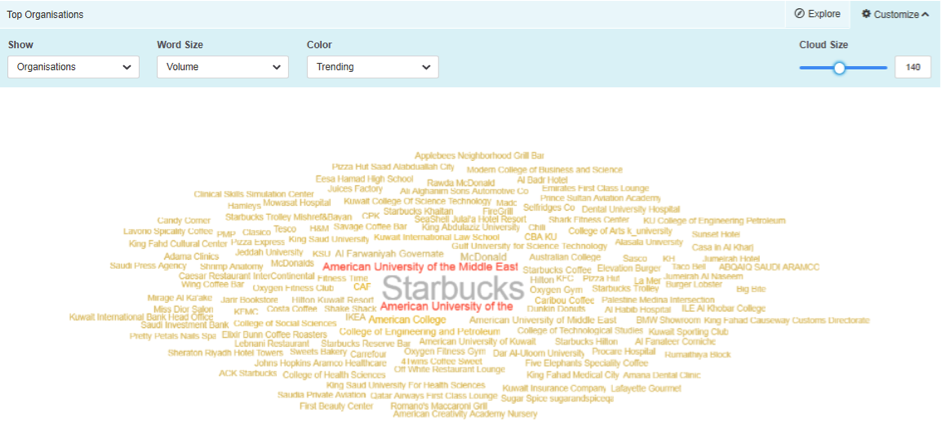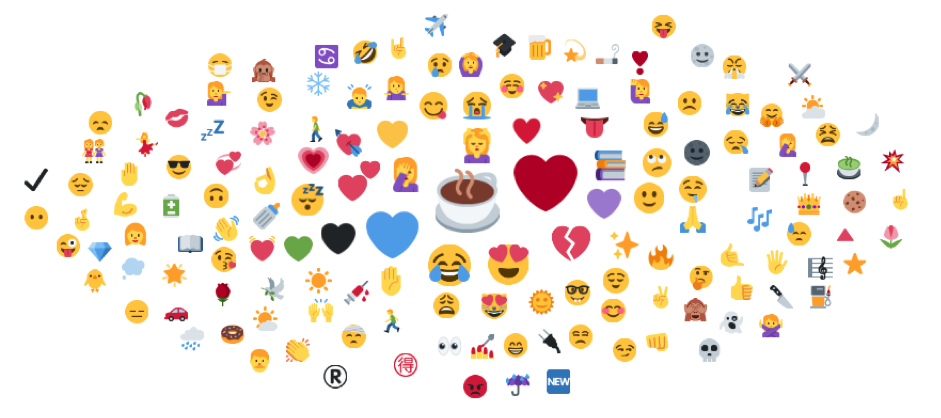Case Study
Hug Digital
How hug digital uses check-in data to guide their everyday consumer research.
Explore the features behind this case studyMost brands and agencies are already monitoring social for the voice of their customers and detractors, but adding location data to this monitoring allows for companies to become even more reactive in their marketing.
By combining Brandwatch data and regional check-in data from Swarmapp and Path, hug digital are able to better understand trends in individual regions and countries, from where people spend their time, to the sentiment of consumers in any given place. With this new view of the customer, hug is able to better advise their clients. This case study takes a look at their first findings using check-in data.
"We have clients who want to study an entire industry before launching a new project, or clients who want to actively monitor dozens of campaigns to improve communications and capture true customer feedback."
Background
In an effort to better understand trending topics and insights from potential consumers, while looking at certain behaviors in individual regions, hug needed to get a new view of the customer.
The team knew it was going to be a difficult challenge if they were to conduct their research with a classic approach of listing popular brands and assessing volume and sentiment — not to mention the amount of time they’d need to spend preparing instead of analyzing.
Then it hit them, check-in data.
Why check-in data?
In this context, we’re not talking about what you do when you arrive at a hotel. We’re talking about actively broadcasting to people that you are at a certain location.
Going to a place and sharing your experience is often an indication of satisfaction (or dissatisfaction). When people share where they are, it’s usually because they’ve been impacted by something happening there.
"We thought, what if we can attribute what we see on social to locations, brands or other specific entities? How could that inform our client’s marketing decisions?"

Process
The study was conducted by collecting and analyzing data from Brandwatch and the new features, Explore + Entities, to uncover and identify relevant insights, based on location.
Some manual analysis was conducted off-platform but hug aimed to keep it all within Brandwatch to prove that, “a lot can be done just by using our browsers”.
hug started with the goal to find the top-visited location for each country.
To satisfy this goal, hug built a simple query to capture all check-ins in each region via popular check-in apps, Swarmapp and Path. hug collected nearly one million shared check-ins on Twitter for 2017.
This kind of study required a large volume of data, so with the research in mind, hug hoped to gather a significant sample of check-in mentions, using Brandwatch historical data.
“We’ve never been happier to be wrong. The data was plentiful and we were able to identify bulks of hundreds of locations in each country and region.”
hug then employed the interactive word cloud with entities, emoji and location. The team used the word cloud extensively in the research, helping in two specific ways.
First, they were able to have a more powerful first impression of the dataset and second, once they had finished categorization, they had a full view of a much smaller, more specific segment.
"The word cloud allowed us to cut analysis time by 50%."
Findings
Looking at each country’s most popular check-ins and analyzing what they were doing at the time, hug was able to derive some interesting insights.
Cafes and restaurants were the most popular locations for check-ins.
According to hug’s research, cafes and restaurants accounted for over half of all check-ins, and mentions of ‘Starbucks’ accounted for two-thirds of all of those.
Using the emoji cloud, hug found that not only is Starbucks the most checked-in and mentioned brand in an area, their sentiment is extremely positive. Even the broken hearts in the emoji cloud are positive – typically referring to things like studying, or disappointment in a specific product that’s sold out.
If you’re Starbucks, having this location-specific intelligence allows you to take these insights and quickly apply marketing tactics, such as launching geo-fenced paid ads, special location-based offers and quick, regional customer service.
If you’re not Starbucks, you might consider incentivizing check-ins so you can begin to take advantage of those insights.
Additionally, knowing a customer is at a nearby business could allow for cross-promotional opportunities. If your Starbucks customer also checks in at the bakery a few doors down, you have a clear opportunity for co-promoting a special offer.
"Halfway through our analysis, we noticed the sheer volume of insights available and decided to concentrate on some of the core areas we found interesting."
Check-ins on the road
While perhaps unique to The Middle East and gulf regions, a surprising insight to hug was the propensity for consumers to check in at landmarks on the road.
For example, the most checked-in location for Bahrain was the King Fahd Causeway, which is the border between Saudi Arabia and Bahrain.
When hug took a closer look at the mentions associated with the check-in data, the team found that nearly half the check-ins were people arriving from Saudi Arabia.
Similar to an American checking in at a new state boundary line, Saudis are keen to announce their arrival to a new country and that behavior alone is a huge marketing opportunity for brands based in the area.
Brands can use this location-based information to tailor their marketing tactics. Brands are placing more and more importance on knowing what’s happening at locations of interest. If you know a specific area is especially popular, you’re able to monitor, contribute to, and amplify the messages being shared online.
Moreover, using check-in data at roads and landmarks can provide brands with potential opportunities, but can also reveal threats and potential crises. A sudden increase in check-ins and mentions on social data at a particular landmark could potentially alert you to something occurring at a specific location that needs urgent attention.
Television and binge-watching behavior
Binge-watching is a universal movement and while looking at the check-in data, hug noticed huge volumes of people checking in while watching a movie or TV show.
Drilling down to a more regional view, hug was able to layer the check-in data over television programming schedules to better understand what people were watching and where they were watching it.
By layering the data, hug was able to find what the most popular shows were in each country, how quickly people were bingeing through them, sentiment around the storylines, and more.
Having this kind of localized insight can allow for brands to tailor their regional marketing around when people are most active online and the most popular topics in that area.
Applying the value
To use location data effectively, brands need to monitor not just locations, but the brand mentions around them and the topics and sentiment of those mentions.
Brands need to be prepared to quickly react to what’s happening, whether it’s promoting positive mentions with geo-fenced offers, or managing negative conversations with customer care.
Knowing this, hug has been able to support its client base across the Middle East and Gulf with insights and decision-making support through continued custom listening projects using location data.
"We often see when businesses think of analyzing customer sentiment and conversations, it’s mainly a tactical, one-time study to uncover insights for a specific topic. But the potential of social listening is much bigger."


